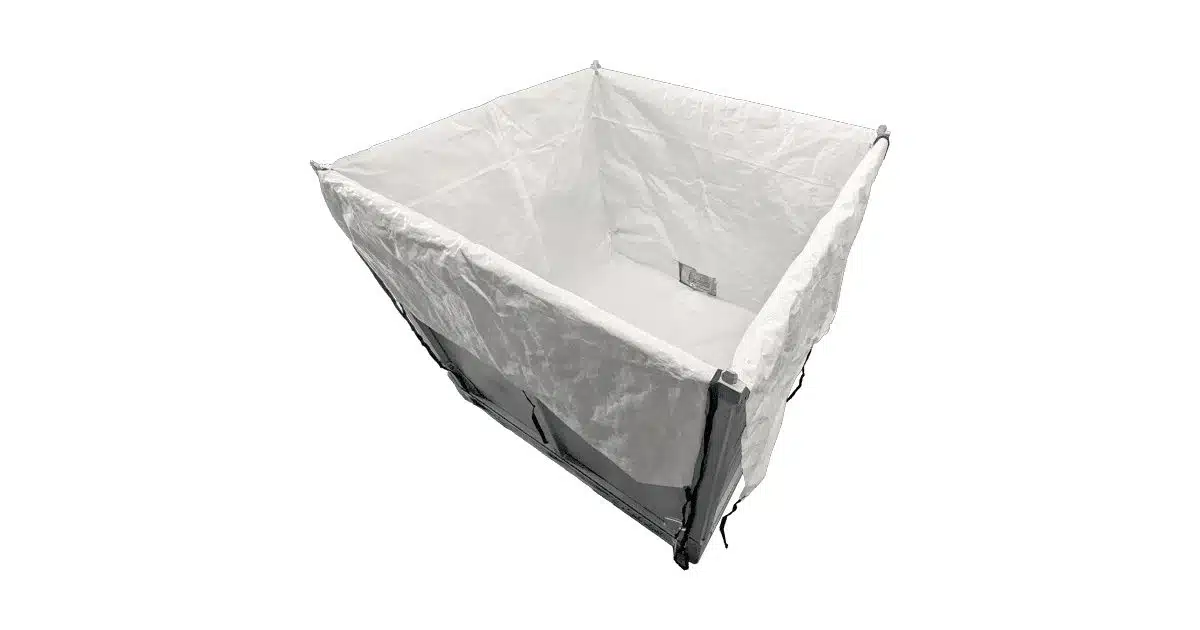Intermediate Bulk Containers (IBCs) have become a cornerstone of bulk liquid packaging, offering efficiency, reusability, and safety. Central to their effectiveness are the protective liners that prevent contamination and simplify container reuse. While standard liners are commonly used, there are specific situations where open top liners provide better performance. Understanding when to use these liners instead of standard options can help businesses optimize shipping, storage, and handling processes.
What Are Open Top Liners?
Open top liners are protective container liners designed with an accessible opening at the top. Unlike standard liners, which often have smaller fill or discharge points, open top liners make it easier to fill, inspect, and replace the liner. This design is particularly useful for handling viscous liquids, semi-liquids, or products that require direct top access. They are part of the broader category of bulk liquid packaging components that support safe and efficient operations.
Advantages Of Open Top Liners
One of the primary advantages of open top liners is ease of installation. Their wide opening makes it simple to fit them into an IBC without folds or air pockets, which can otherwise affect performance. They also make removal easier, reducing downtime during liner replacement.
Open top liners are also practical for filling processes that require fast or high-volume entry points. In cases where the product is thick or flows slowly, the wide opening reduces bottlenecks. They also allow for more thorough visual inspections, ensuring that the liner is correctly positioned before filling begins.
When Open Top Liners Are Preferred
Open top liners are not always necessary, but they are preferred in several key scenarios:
-
Viscous liquids: Products like syrups, gels, or creams benefit from the wide top opening for easier filling and dispensing.
-
Frequent liner changes: Operations that switch between products often can replace open top liners quickly without slowing production.
-
Inspection needs: When quality checks are essential, open tops make it easier to verify cleanliness and liner positioning.
-
Complex fills: Applications that require larger hoses or equipment for filling benefit from the accessible opening.
In these situations, open top liners reduce operational challenges and protect product integrity more effectively than standard liners.
Choosing The Right Open Top Liners And Polypropylene Liners
While open top liners offer specific advantages, polypropylene container liner options remain a reliable choice for many applications because of their chemical resistance and hygienic properties. Choosing between them depends on product type, handling requirements, and operational goals. For guidance on comparing these options, see this resource on Choosing The Right Open Top Liners And Polypropylene Liners.
Supporting Components For Open Top Liners
Open top liners work best when combined with other IBC packaging materials. Dunnage boards distribute the weight of liquid evenly, preventing stress points. IBC base pads cushion the bottom of the container to minimize wear, while IBC top lids and IBC container lids provide the final seal that prevents contamination from above. These IBC protective packaging supplies work together to ensure liners remain secure, clean, and functional throughout transport and storage.
By using a complete system of bulk liquid packaging components, businesses can take full advantage of open top liners while maintaining the safety and reliability of the overall container.
How Open Top Liners Support Different Industries
Open top liners are used across multiple industries where product quality and cleanliness are essential. In the food and beverage sector, they make it easier to package liquids such as oils, syrups, and sauces without risking contamination. In cosmetics, they simplify the handling of thick products like lotions or gels. For chemicals, open tops allow operators to fill containers with higher-viscosity or complex formulations more efficiently. Automotive fluids such as lubricants and coolants can also benefit from the accessibility of open top liners.
Each industry uses these liners to reduce downtime, simplify handling, and maintain product integrity under demanding conditions.
Sustainability Advantages
Open top liners also align with sustainable shipping and packaging practices. By making liners easier to replace, they extend the usable life of IBCs and reduce the need for resource-intensive cleaning. They also minimize waste caused by liner failures, since their design reduces stress on seams and fitting points. This contributes to lower environmental impact while supporting operational efficiency.
When Standard Liners May Be Sufficient
While open top liners provide many advantages, there are situations where standard liners are perfectly suitable. For example, low-viscosity liquids that flow easily through smaller fill ports do not always require an open top. Similarly, operations that do not frequently change liners may not benefit as much from the ease of installation that open tops provide. In these cases, standard liners offer a cost-effective solution without sacrificing product safety.
Comprehensive Guidance On Packaging Materials
Selecting the right liner and accessories involves more than simply choosing between standard and open top options. It requires a full understanding of IBC packaging materials, including dunnage boards, base pads, and lids. For businesses seeking a detailed overview of all available options, the Comprehensive Guide To IBC Packaging Materials And Components offers valuable insights into building the most effective packaging systems.
Why Partner With Innovative Liner Solutions
Innovative Liner Solutions provides a complete range of IBC protective packaging supplies, including open top liners, polypropylene liners, container lids, dunnage boards, and base pads. Their expertise ensures that businesses can choose the right liner type for their specific applications while benefiting from a comprehensive protective system. With a focus on safety, efficiency, and sustainability, they deliver tailored solutions for industries handling everything from food to chemicals.
Conclusion
Open top liners are an ideal choice for scenarios where easy installation, quick replacement, or handling of viscous liquids is required. While standard liners remain effective for many applications, open top options provide added flexibility and efficiency. By pairing them with accessories like dunnage boards, base pads, and top lids, businesses can create a reliable packaging system that meets the challenges of bulk liquid shipping and storage.
For expert guidance on choosing between open top liners and standard liners, contact Innovative Liner Solutions today at (815) 963-9525.


